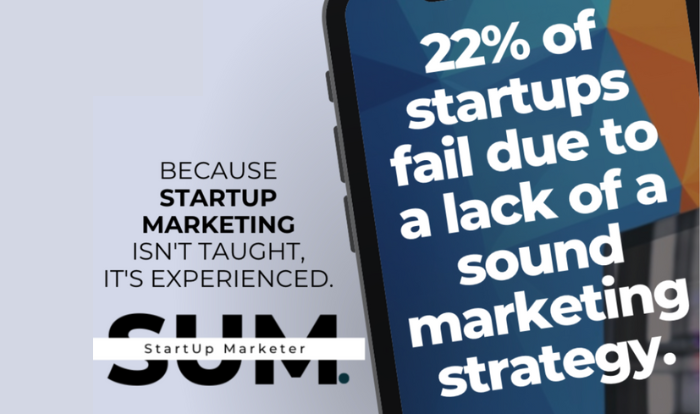The more I work with B2B tech startups, the more I see small SEO miscues that make a giant impact. You’re likely working around the clock to boost visibility, grow market share, and drive more revenue. SEO is a valuable marketing foundation that can do all of these things, but organizations often view it as a one time task that never has to be reviewed, updated, or optimized any further. When SEO gets to live up to its full potential, it moves you closer to your biggest business goals.
Let’s start with visibility.
Organic search is typically a website’s biggest traffic source, with the average organization receiving 53% of its visitors from search queries. That shouldn’t be too surprising when you consider the sheer magnitude of search engine usage:
- Google is the most visited website in the world, with 91.1 billion visits in December 2021.
- The average person does 3-4 Google searches every day, which adds up to a whopping 99,000 Google search queries every single second.
- Over 60% of Google’s US organic search traffic comes from mobile devices, which shows people turn to a search engine when they need a quick solution.
- It’s estimated that 27% of search queries are full questions, instead of just keywords, proving that people are now using search engines as personal assistants, similar to Alexa, Google Assistant, and Siri.
- In 2020, questions starting with the word “why” were part of more Google search queries than ever before.
SEO success became a lifeline during the early days of the pandemic. When businesses were forced to close their doors, consumers overwhelmingly turned to search engines for even the most basic of daily tasks. For example, according to Google’s search trends, some of the most popular queries of 2020 were:
- “How to color your hair at home”
- “How to make whipped coffee”
- “Virtual learning”
- “Disney churro recipe”
The organizations that had already thought to optimize for keywords got a major SEO boost when business boosts were needed most. The organizations that had ignored SEO suddenly found themselves out of sight and out of mind.
Today’s SEO isn’t just about optimizing for particular keywords, though. Google has created several opportunities for organizations to snag premium real estate — including answering questions and showing up in a Featured Snippet, driving local awareness with a Google Business Profile, and making images indexable in Google Image Search (which has become a mega search engine in its own right).
Take a look at Google Search Console or your Google Analytics account and see how much of your traffic comes from organic search. If it’s significantly lower than the 53% average, it’s a sign you have a big opportunity for SEO improvement.
Technical SEO, the elements that help the search engines crawl and index your site more efficiently, is likely one of those opportunities. For example, headers and image alt tags can tell a search engine how to interpret a particular page, while mobile responsiveness, site load speed, meta tags, and an XML sitemap all have an impact on your entire website.
If your website is hosted on WordPress, the Yoast plugin can analyze your technical SEO and alert you to issues. If it’s not, tools like SEMrush, Moz, and Ahrefs can conduct similar analyses.
What about market share?
Thanks to all of that extra visibility, SEO is a valuable tool for growing market share. Plus, SEO gives you a better understanding of the people who visit your website — specifically their needs, challenges, and intent — so you can create an experience that streamlines their purchase journey.
Start by analyzing the search queries that bring you the most traffic. What are people searching for? Does your website content have the answers they’re looking for? Some of these queries may not be a surprise, but some may alert you to optimization opportunities you never would have spotted otherwise.
Take your analysis one step further by using Google Analytics to see the path that traffic takes around your website. Is there a certain page your organic searchers tend to gravitate towards? Is there a certain journey they tend to take? If so, optimize it and make the path to purchase as efficient as possible. Fortunately, analyzing data this way is futureproof because the cookiepocolypse, which will eliminate third-party user-specific data, doesn’t affect it.
For specific insights into the competitive landscape, calculate your SEO share of voice. There are also tools to show you how your competitors’ websites are structured, which topics they’re focusing on, and how they’re building links.
Finally, let’s talk about how SEO drives revenue.
Did you know that 83% of B2B purchasing decisions are made before talking directly to a vendor? Today’s decision makers prefer to research solutions, analyze competing products/services, and compare pricing all on their own. If you don’t have an SEO presence, you won’t be part of this process.
After everything we’ve discussed, it’s easy to see that SEO creates a straightforward path to revenue growth:

So what should you do now?
If you have an SEO strategy, audit it. If you don’t have an SEO strategy currently in place, create one — or hire experts to create one for you. This is one area of your business where you can’t afford to cut corners or overlook even the tiniest of details.
In the realm of startup marketing, sending generic campaigns is a perilous misstep. The solution? Segmentation strategies. Dive into our Read more
Turn your startup’s marketing organization into an impact driver with these three elements detailed on The StartUp Marketer blog.
Learn how startup marketers can perfect the art and science of prioritization in this StartUp Marketer blog post.
Startup success requires understanding marketing’s fundamentals, like taking a customer-centric approach. Learn more on The StartUp Marketer blog.





